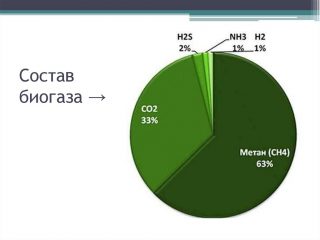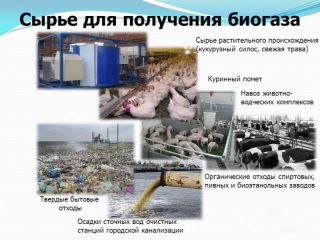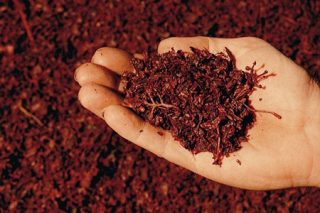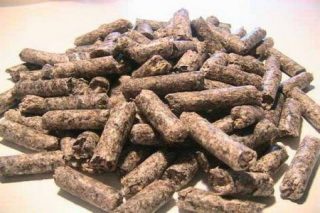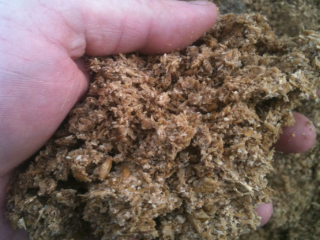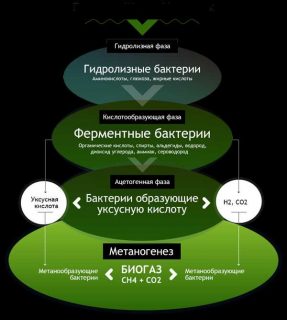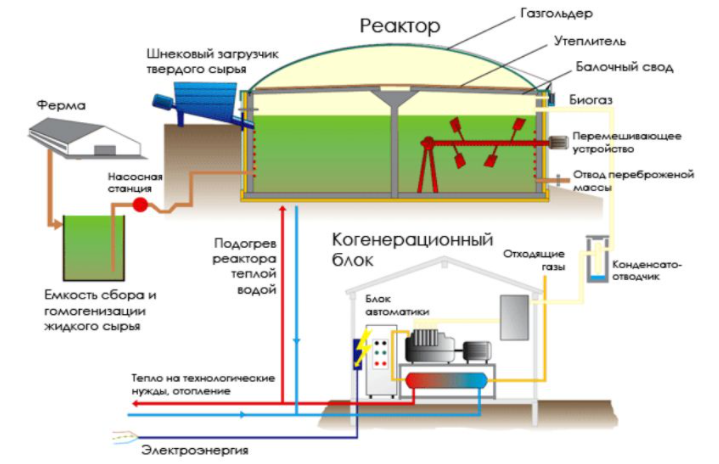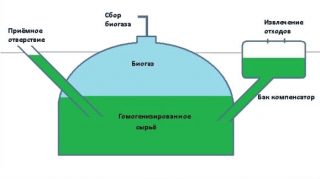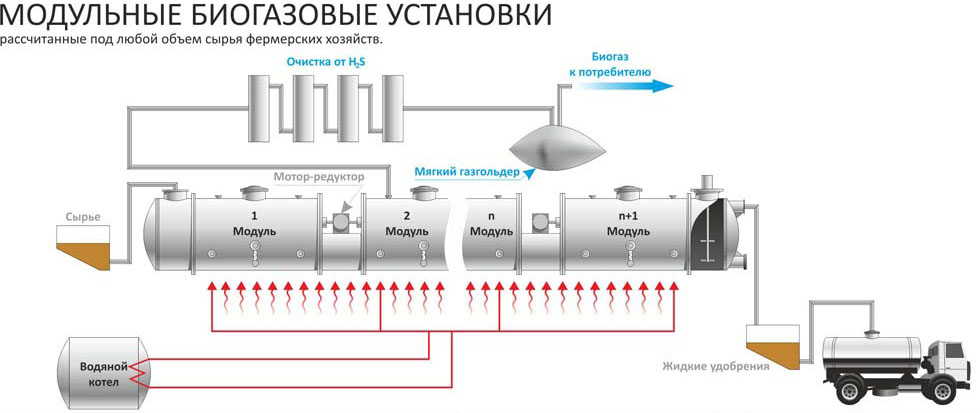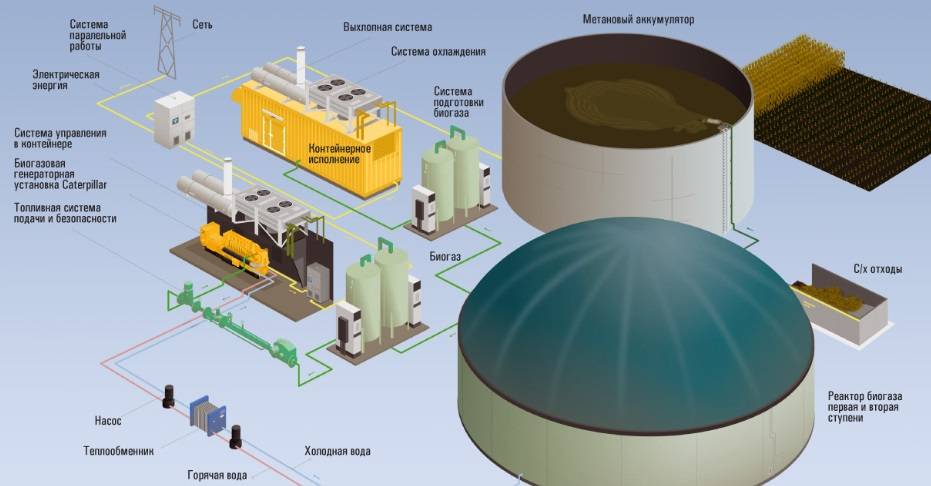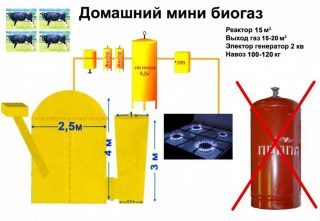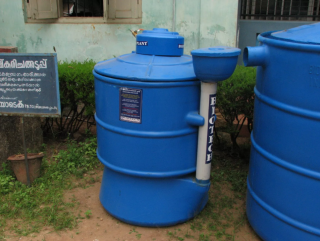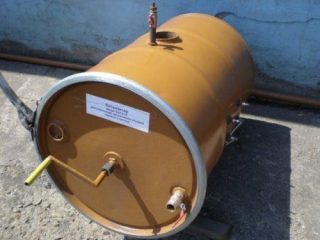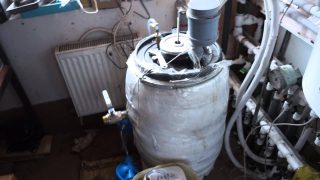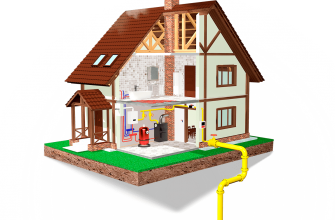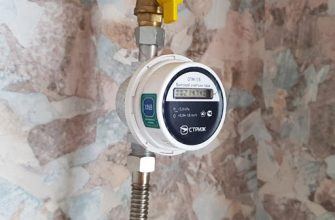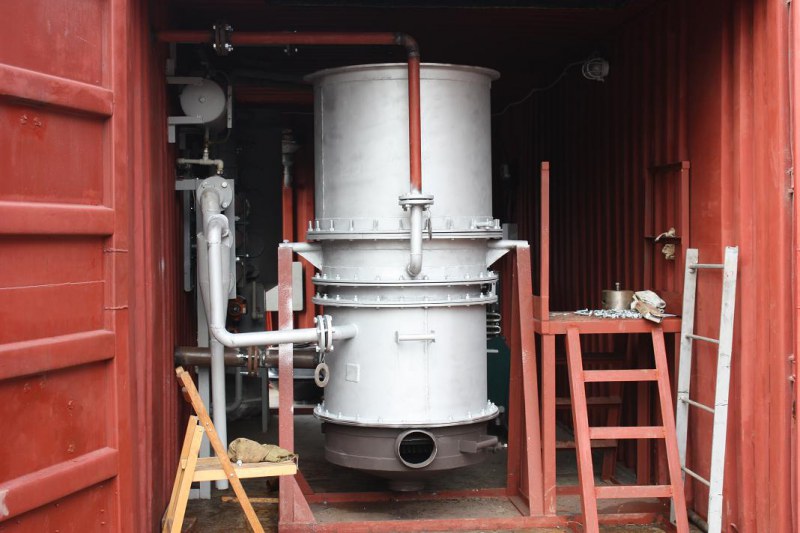A biogas plant allows you to utilize waste from private farms, while receiving inexpensive electricity or fuel for home heating and other household needs. The device is assembled from scrap materials or from factory components.
- Description and properties of biogas
- Raw materials for biogas production
- Mining methods
- How long is enough
- Efficiency
- Comparison with other energy sources
- The principle of operation of a biogas plant
- Wet
- Dry
- Scope of application
- For a private house
- For farming
- For the enterprise
- DIY biogas station
- Design
- Location
- Materials for making a bioreactor
- Gas collection and removal system
- Purification from impurities
- Mixing equipment
- Heating and thermal insulation
- Estimated cost calculation
- Biogas production costs
- The cost of a ready-made and home-made biogas plant
Description and properties of biogas
The properties of the mixture depend on the constituents components:
- methane explosive and extremely flammable, colorless and odorless, consumer properties are associated with a large release of heat during combustion;
- carbon dioxide (carbon dioxide) inhaled causes loss of attention and fatigue, reducing blood oxygen saturation;
- hydrogen sulfide in the concentration that is in the finished product, it is not subject to explosion, but is toxic to the human body;
- ammonia It smells unpleasant, but in dangerous quantities that can damage the mucous membranes of the eyes and respiratory organs, it is rarely produced in installations.
Physical properties:
- energy reserve 5–6.5 kW / h in one cubic meter;
- calorific value up to 7500 kcal / m³;
- ignition temperature - 680–750 ° С;
- pressure in the reactor from 0.05 atm.
The spread of parameters is predetermined by the different composition of raw materials, the selection of processing technology and climatic conditions during the reaction.
Raw materials for biogas production
- manure of any fraction, bird droppings;
- plant residues - weeds, straw, silage;
- pulp and pulp;
- beer stillage;
- substandard grain crops;
- fish production waste;
- molasses of various origins;
- the remains of the slaughterhouse;
- fat;
- root crops that have lost their nutritional value.
The exact amount of biofuel for each type of feedstock depends on the processing technology.
Mining methods
The raw material goes through a preparation stage to make the fermentation process more active and productive.
Manure there are two types: natural and self-alloy. The first species is taken from under the animal along with the bedding. The self-alloyed species is removed from the farm by a stream of water.
Pulp and pulp - these are crushed parts of vegetables, fruits and roots, from which the juice is squeezed out.
Beer stillage, molasses - a by-product of breweries, sugar factories, are a valuable food additive, therefore the feasibility of using for gas production is determined by the cost of the product.
Plant residues subjected to cutting or ensiling.
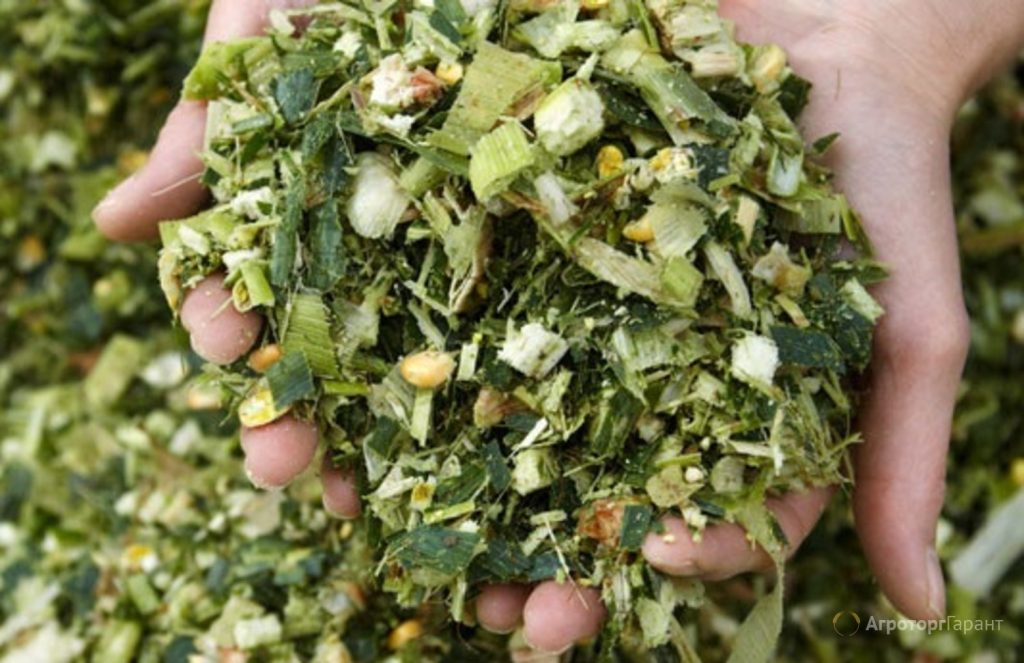
How long is enough
The approximate gas yield from different substrates is collected in the table.
| Substrate | Moisture content of raw materials,% | Biofuel output, m³ from a ton of raw materials |
| Cattle manure (natural) | 85 | 55 |
| Cattle manure (self-alloy removal method) | 95 | 22 |
| Natural pork manure | 85 | 62 |
| Self-alloyed pork manure | 95 | 25 |
| Bird droppings | 60–75 | 90–100 |
| Fresh grass | 50–90 | Up to 200 |
| Corn silage | 60–90 | Up to 180 |
| Potato pulp | 90 | Up to 32 |
| Beet pulp | 78 | 119 |
The following table summarizes the amount of raw materials that can be obtained from animals and from one hectare of arable land.
| A source | Raw materials | Number of raw materials t / year | Biogas quantity m³ |
| Milking cow | Liquid manure without bedding | 20 | Up to 500 |
| Fattening pig | Liquid manure without bedding | 2–6 | 40–170 |
| Fattening goby | Solid manure with bedding | 5–12 | 250–850 |
| Horse | Solid manure without bedding | up to 8 | 500 |
| 100 chickens | Dry droppings | 2 | 250 |
| 1 hectare of arable land | Sugar beet, corn silage | 40–70 | 5200–10500 |
| 1 hectare of arable land | Fresh grass and grain silage | 25–50 | 5000–8000 |
The data given in the tables cannot serve as a basis for accurate calculations, the indicators are averaged over the industry.
Efficiency
The benefits of biogas are assessed by the benefits of its use and output of thermal or electrical energy.
The efficiency indicator depends on the amount of methane in the mixture, which may contain 45–75%. On average, when burning 1 m³ of biogas, taking into account losses and generator efficiency, 1.5–2 kW / electricity can be obtained.
Comparison with other energy sources
By its consumer properties, biogas can be compared with other energy sources: natural and liquefied gas, compressed methane.
| Characteristic | Biogas | Natural | Liquefied propane | Compressed (methane) |
| Ignition temperature, ° С | 700 | 650 | 480 | 650 |
| Density, kg / m³ | 1,2 | 0,7 | 2,0 | 0,73 |
| Density relative to air | 0,9 | 0,55 | 1,5 | 0,55 |
| Combustion energy kW * h / m³ | 2,9–5,0 | 10 | 25 | 10 |
The principle of operation of a biogas plant
In practice, two types of biofuel production have become widespread: “dry” and “wet”.
Wet
The method is most widespread, as it is suitable for the production of biofuels from raw materials with a high moisture content... This is how gas is obtained from manure.
Raw materials are saturated with water up to 90% moisture. Self-alloying manure (removed from farms by streams of water) is already ready for processing. In industrial plants, the substance is fed into reactors by screw conveyors or fecal pumps. The tank is insulated, and the biomass is constantly mixed in it.
As the decomposition progresses, a gas mixture is generated, which is discharged into the accumulator. The sulfur content is reduced by special bacteria that colonize the tank walls. After cleaning, the fuel enters the cogeneration department, where electricity is generated by gas-piston generators. In other variants of stations, the gas is brought to the required operating pressure by compressors and enters the distribution network.
Part of the energy is taken for heating the biomass in the reactor to 41–43 ° С.
The sediment is removed as it accumulates.
In household models, there is no cogeneration system, all the gas is used for the needs of generating heat. Loading and unloading the reactor is carried out manually.
Dry
Allows to obtain gas from raw materials with low moisture content. Dilution of the substrate with water is not provided, but fermentation occurs at 50% humidity in the reaction zone.
As fermentation progresses, the liquid fraction is collected in a drainage system and, using circulation pumps, is sprayed over a semi-dry substrate.Stirring and turning over does not occur, which reduces the energy consumption for production.
Fermentation takes place at a temperature of 34–37 ° С. External heating is minimal, heat is released during chemical reactions of organic raw materials.
Both methods can be applied when operating a self-built biogas plant.
Scope of application
For a private house
In private households, as a rule, there is not enough organic waste to provide heating for a residential building. However, the manure of one cow and a couple of pigs is enough to get gas. for heating places where animals are kept and for feed preparation... Gas infrared burners are used for combustion.
The fermented mass is distributed over the garden or backyard.
For farming
There will be enough gas in the farm for heating all rooms with gas boilerswhich are safer than burners and can work around the clock.
The cost of factory installations with an electricity generator is approaching 1 million rubles, so they are rarely purchased.
Processing manure into a fermented mass is beneficial for the farmer, as it reduces the cost of delivering the resulting fertilizer to the fields.
For the enterprise
Large agricultural enterprises receive raw materials for biogas plants all year round.
The resulting biogas is used to generate electricity and fuel for boilers. Waste is granulated and distributed over arable land. Some enterprises produce liquid fertilizers, which are sold in small containers of 5 liters or more.
Simultaneously with the production of gas, agricultural holdings are solving the problem of utilizing manure and poultry droppings.
DIY biogas station
With a lack of experience in building complex engineering systems, they try to adhere to the principle: the simpler the design, the more reliable and durable it is... DIY biogas plant manufacturing instructions include several stages:
- design taking into account the amount of available raw materials and productivity;
- choice and site preparation placement of equipment;
- blank devices, assemblies, assemblies;
- installation containers;
- connection auxiliary equipment;
- gas pipeline installation;
- start-up, setup and adjustment.
After a successful start-up, the identified deficiencies are eliminated and the system is put into operation at full load.
Design
Based on this, it is assumed that one cubic meter the fermentation tank emits sufficient gas for heating 10 m² of housing... Thus, to heat a 50 m² country house, you need a 5 m³ tank.
Loading and unloading of raw materials in home installations produced at the same time, approximately once every 15-25 days, depending on consumption. It may take up to 5 days to enter the operating mode.
At this time, they provide for heating the house in other ways or build a reservoir of 1–2 m³.
Location
Place for the container fermentation is chosen based on several conditions:
- ease of delivery of raw materials and waste disposal;
- safe storage of raw materials and waste away from housing;
- minimum costs for the construction of engineering networks.
The correct location should be conveniently located taking into account the infrastructure of the site.
Materials for making a bioreactor
- concrete or brick bunker;
- plastic and fiberglass sealed containers;
- polyethylene, polypropylene and polyvinyl chloride sleeves;
- steel barrels, cubes, columns.
Reactor requirements:
- waterproofness;
- strong enough to withstand the weight of the wet substrate and the effective soil pressure;
- ease of service;
- resistance to aggressive environments.
For the manufacture of the raw material supply system, choose plastic pipesthat are used in the sewer. It is more profitable to use HDPE pipes - they are connected without using gas welding.
Gas collection and removal system
A branch leading to the gas storage tank is connected to the outlet pipe.
In small stations, gasholders are made of reinforced polymer film.
Purification from impurities
For the operation of domestic hot water boilers or hobs, purified gas is required.
At home, cleaning and dehumidification is carried out by passing fuel through tank with water seal... Another way is to use housings from household water filters with silica gel poured into them. The second filter is filled with metal filings or washcloths - this is a reliable protection against excess sulfur.
Mixing equipment
Factory-made electric stirrers with complex gearboxes are rarely used in DIY biogas plants due to their high price and electricity costs.
Others apply ways:
- mixing by hand;
- periodic switching on of fecal pumps, pumping the liquid fraction from the bottom to the surface;
- the use of a compressor, which pumps gas from under the reservoir lid into the substrate, moves the bottom layers.
There is no need to stir around the clock; to automate the start-up process, pumps, compressors or mixers are connected via timers of suitable power.
Heating and thermal insulation
Heat preservation methods:
- deepening the reactor into the ground with simultaneous wall insulation;
- insulation of the outer bunker with modern materials - polystyrene, expanded polystyrene, stone wool, foil-coated foam.
Sometimes equipment is installed in outbuildings or pavilions made of wood or polycarbonate are erected around the reactors. Heating is carried out by electric heating elements or a boiler is started, which consumes part of the produced gas.
When the substrate temperature drops below 30 ° C, fermentation can take up to 30 days or stop altogether.
Estimated cost calculation
Before proceeding with the design of the installation, it is necessary to carefully calculate all the costs involved. In some cases - harsh climate, few raw materials available - it is more profitable to abandon the construction.
Biogas production costs
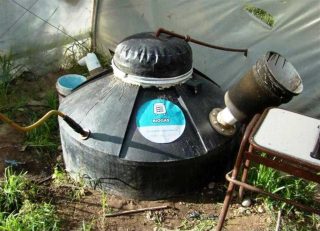
Biogas production costs consist of the cost of equipment, installation and maintenance costs... If purchased raw materials are used, the cost of delivery is taken into account.
The installation itself is bought factory-made or do it yourself... Manufactured products are installed, configured and serviced by specialized organizations. For some models you will have to purchase Consumables - fermentation activators or bacteria.
During operation, the costs consist of electricity costs for mixing the substrate and heating the reactor.
The cost of a ready-made and home-made biogas plant
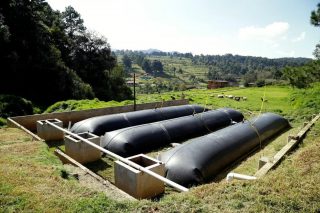
The industry produces biogas plants for farms. The volume of the bioreactor varies from 0.5 to 30 m³... Complete system with reservoir on 1m³, for example, BUG-M, containing all the necessary components, costs about 180 thousand rubles... Installations for farms with a herd of cattle 12 heads or 1000 birds will cost 2 million rubles.
Few households can afford the purchase of such equipment, so they prefer to make the installation themselves.
Home generators can cost the amount from 50 thousand rubles, which allows you to significantly save on your purchase.

